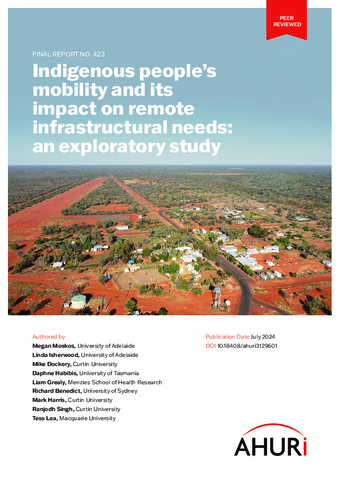With Indigenous populations at risk of higher rates of infection and more serious disease than non-Indigenous populations, a policy of returning to remote communities (i.e. Return to Country) was encouraged during the COVID-19 pandemic. This policy led to high expectations for remote communities to meet the often diverse and complex needs of returnees, placing further strain on existing, underfunded remote community infrastructure and services.
This research explores mobility patterns of Indigenous people living on Country and its impact on the planning of housing, infrastructure and services within remote communities.
Temporary mobility, that is movement that does not involve a change of usual residence, is caused by a wide range of factors, such as people’s participation in cultural business or attendance at funerals, travel due to school holidays and seasonal weather patterns, participation in sport and leisure activities or to access alcohol outside the community. Factors affecting longer-term population mobility include access to housing, infrastructure, services and employment; family conflict and violence; and community unrest.
The research finds increased and improved housing is required for many remote communities. In addition to reducing existing levels of crowding, communities experiencing population growth need to be more clearly identified so as to reduce concerns in the future. Essential infrastructure, such as power and water, must also be improved to support the development of new community housing.

